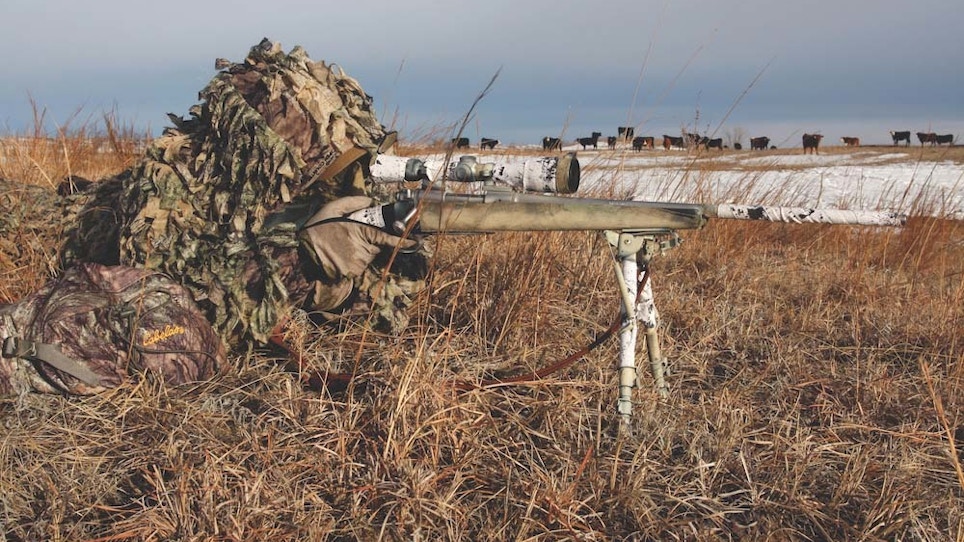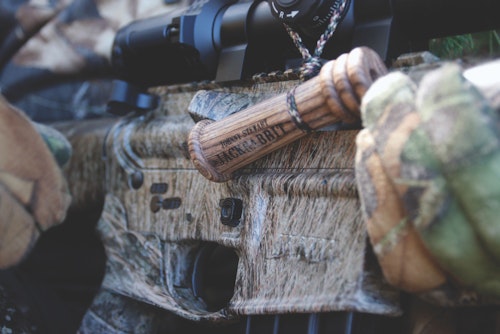
Red foxes seek out habitat niches where they can avoid conflicts with coyotes — near farmsteads, croplands close to roads and even on the outskirts of towns.
There’s no doubt that the more you know about the canines you hunt the more successful you’ll be — whether you’re targeting coyotes, red or gray foxes or even wolves. A working knowledge of how these predators interact with their environment, their prey and each other is paramount to consistent success. Knowing how and where they hunt, their preferred food sources, territorial tendencies and a host of environmental factors provides insight into their daily lives and habits and allows you to effectively and consistently pattern them.
I’m a student of biology when it comes to hunting predators, and a lot of that comes from my trapping background. Think about it. Trappers use their knowledge of animal behavior and ability to read sign to quickly assess the travel patterns of the animals he or she is targeting. They quickly determine population densities and travel routes based on food and water sources, bedding and escape cover, choke points, etc. By reading animal sign — tracks, scat, trails and such — trappers sift through the available data and then apply their skills to select specific trap locations where they manipulate a fox or coyote to step into a cleverly concealed trap.
Like trappers, experienced predator hunters understand the importance of predator/prey relationships and how having a working knowledge of their interactions contributes to more effectively hunting these predators. Predators respond to the distress screams of prey species because they have to. Competition for the protein they provide demands it. The more scarce food is, the more fierce the rivalry. And the sustenance predators attain by successfully monopolizing those resources defines the fine line between prosperity and deficiency. Of course, this is a simplification — predation in its actions and reactions is more than just a transfer of energy. It represents an extremely complex interaction between two or more species — the hunters and the hunted.
While it might not be necessary to understand the complexities of predator/prey relationships to be an effective hunter, it is key to explaining why hiding out and imitating a predator’s supper is an effective means of hunting them. Knowing that canines respond to the distress screams of prey species, hunters can use mouth calls or electronic callers to imitate those sounds to lure coyotes and foxes into their sights. And understanding where the rabbit spends the majority of its time, gives insight to where coyotes and foxes might hang out and hunt — and where you should concentrate your calling efforts.
Just as important is having a rudimentary understanding of the complex social interactions within the canine community. Competition for resources is robust wherever these predators occupy the same or overlapping habitat — both interspecific (between different species) and intraspecific (between the same species).

Interspecific Competition
The classic interspecific relationship between red foxes and coyotes in North Dakota provides one good example, where foxes are forced to carve out habitat niches where they can survive persecution from coyotes.
Back in the ’90s, I hunted red foxes in North Dakota with biologist Steve Allen, and he schooled me on the nuances of canine competition. There seemed to be a somewhat equal distribution of coyotes and red foxes in the areas we were hunting, but Steve was able to consistently predict which species would show up to the call based on the types of habitat we were targeting. I learned that one important variable was the presence or absence of human activity. Foxes seemed to be much more comfortable living in close proximity to humans, whereas coyotes tended to avoid human contact.
Obviously, coyotes occupy a higher position on the food chain than foxes and will run off the smaller predators that infringe on their territories and compete for the same food resources. To survive, foxes are forced to carve out habitat niches near farmsteads, in croplands close to roads and even on the outskirts of towns — places coyotes avoid. Coyotes center their activities, especially pup rearing, on relatively large, roadless areas where cropland is less abundant.
“It’s not a friendly relationship, let’s put it that way,” Allen said about the red fox/coyote relationship in North Dakota. “It’s the same with all wild canines,” he said. “Each species likes its own kind, but everybody hates the other guy. And that particularly holds true in the case of coyotes and red foxes. Coyotes drive red foxes from their territories, often killing them. The survivors figure this out and go where there aren’t any coyotes. That’s how coyotes end up in some areas and foxes end up in others.”
Same with gray foxes and coyotes. In Arizona and Texas, where I’ve hunted both species extensively, the smaller canines tend to select habitat niches that are not occupied by coyotes, or where they are more able to escape attacks from the larger predator — brushy washes, rocky cliffs, rimrock bluffs and such. Coyotes more commonly hunt the large, open flats during the night and retreat to moderate cover during the day.
Intraspecific Competition
But what Allen said about each canine species liking its own kind isn’t entirely true. Intraspecific competition among canines also has an impact on predator dynamics, as coyotes and foxes carve out and defend territories against others of their own species and drive out their own young as they mature.
Canines are very territorial, especially during the winter breeding season. As they pair up, they locate and defend those resource-rich areas where they have the best chance of successfully raising their pups. Territoriality is one mechanism whereby the population density of a species is adjusted to the availability of resources such as food, cover and water. Each territory holder is defending itself and its family. When all of the critical resources have been divided between territories, any remaining animals face little more than the prospect of starvation, or at least not breeding until they can occupy a territory that becomes vacant.
Dispersal occurs as juvenile animals are pushed from their parents’ home ranges and are forced to seek out new territories. This allows for population growth, genetic cleansing and the overall distribution of the species. Rather than deal with the stress of limited food sources and constant attacks from more dominant members of the society, young canines venture off on their own in search of vacant habitat niches where they can carve out a living.

Putting It To Work
OK, here’s how you can put this information to work in the field. You already know that canines respond to the distress screams of prey species — rabbits, hares, birds, rodents and the like — because competition for food is intense. But now you also know interspecific and intraspecific competition dictates the way canines interact with each other and compete for those resources.
Here are some examples to get you thinking:
Young-of-year canines disperse during late fall and are wandering the countryside looking for a home. As a predator hunter, this is one of the most productive times afield because these young canines are naïve, vulnerable and hungry, often responding aggressively to any food-source call. Using coyote vocalizations (howls and barks) might do more harm than good at this time of year. Not only will you terrorize any fox within hearing distance, young coyotes will cut out for the next time zone if they think they’ve trespassed on a dominant coyote’s territory.
Coyotes are territorial during the winter breeding season, and that means border wars. While food-source calls are effective during this time, vocalizations — especially aggressive challenge howls and barks — will often get a swift and aggressive response.
Foxes and coyotes occupy different habitat niches where their territories overlap. If you plan to target one species over another, you need to analyze terrain features and make educated deductions as to the habitat preferences of each species.
Becoming the best predator hunter you can be requires that you possess advanced knowledge of the animals you’re pursuing — that you own a Master’s Degree in Critterology, if you will. Only when you understand the intricate interactions of predators and their prey and the social complexities that affect their population dynamics will you enjoy optimal success afield.





